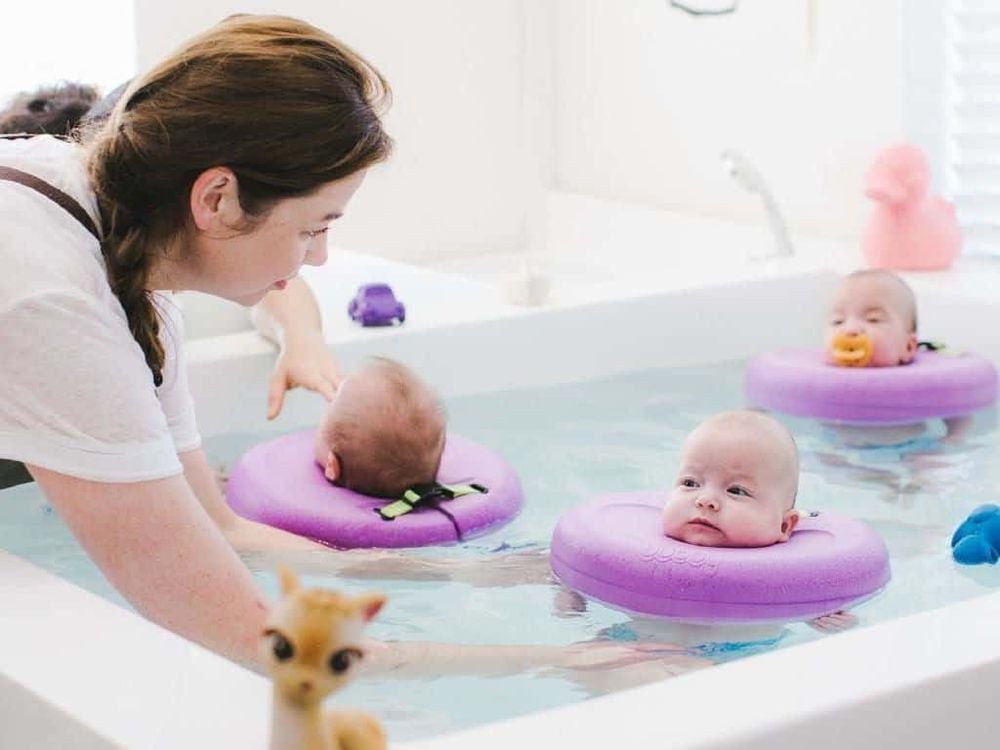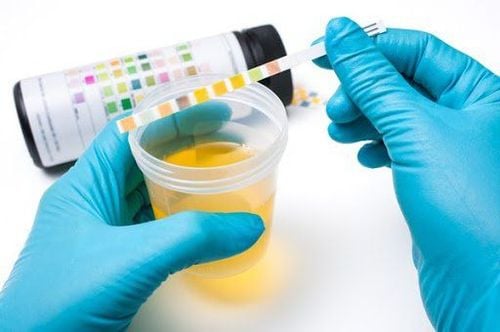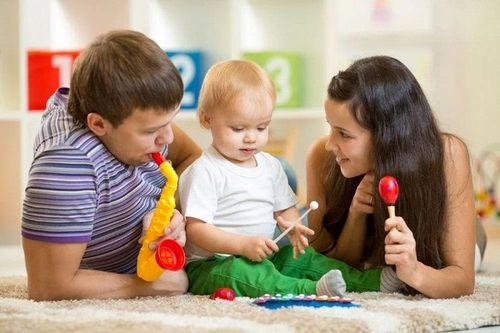This is an automatically translated article.
Swimming for babies is currently considered a new trend in child rearing and is being responded by many parents. So is swimming in water good for babies and what should be paid attention to?1. The benefits of hydrotherapy for babies
1.1 Returning the baby to a liquid environment With the right care, hydrotherapy is a way of allowing infants to enjoy the same watery environment as they did in the womb.Being in a liquid-filled environment like a hydroponic pool helps to stimulate the swimming reflex that is often lost as children get older. Furthermore, floating therapy during hydrotherapy also helps with the nascent function of the digestive, circulatory and respiratory systems. The water pressure and movement that stimulate these areas will produce positive benefits for the overall health of the infant.
1.2 Increase love for water It is advisable to let your baby get used to water before he knows he is afraid of water. Show them early on that water is a great place to play and parents will find them comfortable in the environment by the time they start learning to swim.
1.3 Reduce stress Parents may think that taking their child to the hydrotherapy pool with them is extremely stressful but in fact, even for babies who have never been through any “swimming classes” , being in the pool with the kids really has a positive effect and relieves stress.
Scientists studied this by measuring the levels of cortisol (the hormone the body releases in response to stress) of infants 6 months to 13 months before and after their hydrotherapy sessions. . The same is true if the child is swimming in water with peers.
1.4 Development of body movement According to doctors, leading experts on motor development of infants, aquatic swimming is the best condition to help children discover their motor abilities in the first months of life. .
The gentle resistance created by the water environment will allow children to exercise their muscles rather than wait until they can crawl. Studies have shown that babies who have the opportunity to explore their movements during hydrotherapy sessions at an earlier age have more advanced motor skills than babies of the same age.
1.5 Cognitive development In the hydrotherapy pool, the child does not need to be bound by the parent's hold. Children have complete control over their bodies. Children will quickly realize that when they push off the side of the tub, their body pushes back. A simple concept for adults but a very important lesson for children.
Furthermore, when he can see his hands and feet moving in the water, he will see his body moving in the same way. At the same time, your baby can touch and move objects at will and what movements allow him to do so while swimming.
1.6 Language Development Aquatic swimming makes the bath a new place for parents to interact with their children through language. In this way, the child is also exposed to new command words such as “come back”, “come back” and other words that parents usually do not use until the child can move on land, expand their vocabulary.
1.7 Optimizing Infants with Special Needs Parents of children with developmental delays or physical limitations need hydrotherapy sessions like real lessons. Indeed, hydrotherapy allows babies to participate in rehabilitation therapies in the water as early as 8 weeks of age, and starting early can make a big difference in the long run.

Bơi thuỷ liệu cho bé có tốt không là thắc mắc của nhiều bậc cha mẹ
2. How to practice water swimming for babies?
Parents need to know that participating in flotation therapy specifically designed for babies and young children is healthier for their children than taking them to a public swimming pool. Because hydrotherapy pools for babies have very specific standards for water purity and treatment, which makes swimming pools a safer, more natural option for immature development.The designers of baby swimming pool technology have set forth other safety standards and industry-specific methods. At the same time, licensed flotation companies remove contaminants from the water with safe products, which reduces the risk of children being exposed to pathogens in the aquatic environment. Part of the water management in the baby hydrotherapy pool also includes maintaining the water at body temperature, limiting perspiration. The high concentration of salt in the water always ensures the permissible value, which both means bacteria and other harmful microorganisms cannot thrive in the system and does not cause irritation to the baby's skin. In addition, the swimming pools must also be cleaned and filtered thoroughly after the children finish using the time.
On the part of parents, the following things should be kept in mind when taking their children to practice hydrotherapy:
Proper water swimming does not increase the risk of infection of the umbilical cord, so there is no need to wait for The umbilical cord has healed completely before putting the infant in the hydrotherapy pool, which can be started whenever the baby seems ready. Choose a reasonable time to learn to swim with little interruption, avoiding affecting the feeding time and sleeping time of the child. Children can start swimming only for a very short time to get used to it and then gradually increase the time, repeating 2 to 3 times a week is ideal. Only bring children into the hydrotherapy pool when the child feels comfortable, cooperative and has no symptoms of illness or any other signs that make parents feel "it doesn't look right". Swimming before going to bed will help your baby relax and sleep better. Avoid hydrotherapy just before or after a feed if your baby is hungry, he won't relax and enjoy the experience, and if he's full after a feed, he'll run the risk of 'swallowing milk'. Never leave a child unattended or alone. If you need to get out of the pool, wrap your child in a towel and take them with you. Make sure the temperature of the air and bath water is comfortable and suitable for your baby's sensitive skin, preferably within 38 degrees Celsius. In short, hydrotherapy is not a complicated process at all. It also gives children a unique experience that is optimized for all children's development. However, the safety of children is always paramount. Therefore, parents need to be equipped with basic knowledge about the hydrotherapy swimming process for their baby, don't be afraid to ask questions about this process such as whether swimming is good for babies, practicing hydrotherapy for babies like that. How to confidently bring your children miracles.
For children to be healthy and develop well, it is necessary to have a nutritious diet in terms of quantity and quality balance. If children are not provided with adequate and balanced nutrients, it will lead to diseases of excess or lack of nutrients, which adversely affect the comprehensive development of children in terms of physical, mental and motor skills.
Parents should supplement their children with supportive products containing lysine, essential micro-minerals and vitamins such as zinc, chromium, selenium, and B vitamins to help fully meet their child's nutritional needs. At the same time, these essential vitamins also support digestion, enhance nutrient absorption, help improve anorexia, and help children eat well.
Parents can learn more:
Signs of zinc deficiency in children
Micronutrient deficiency and failure to gain weight in children
Please regularly visit Vinmec.com website and update useful information to take care of your child. Take care of the baby and the whole family.













